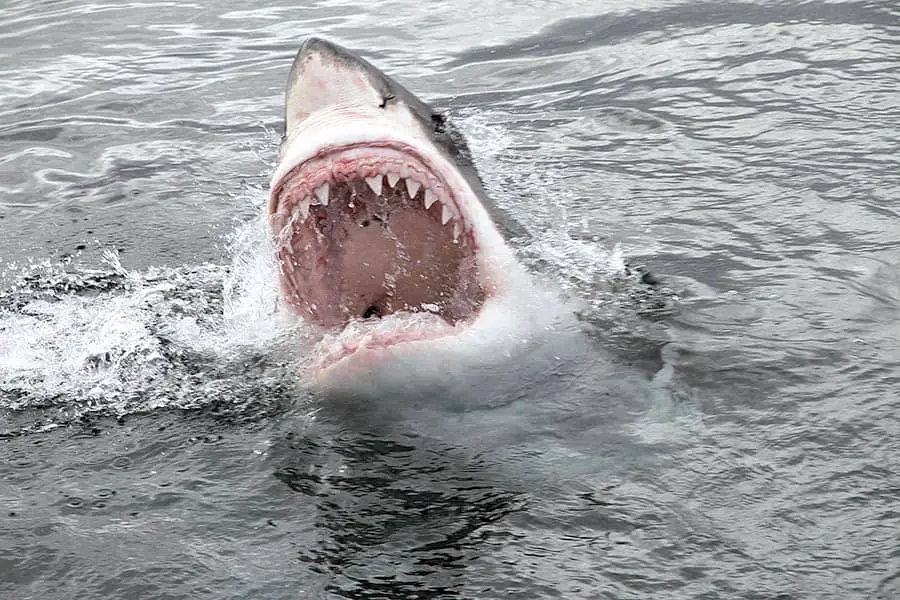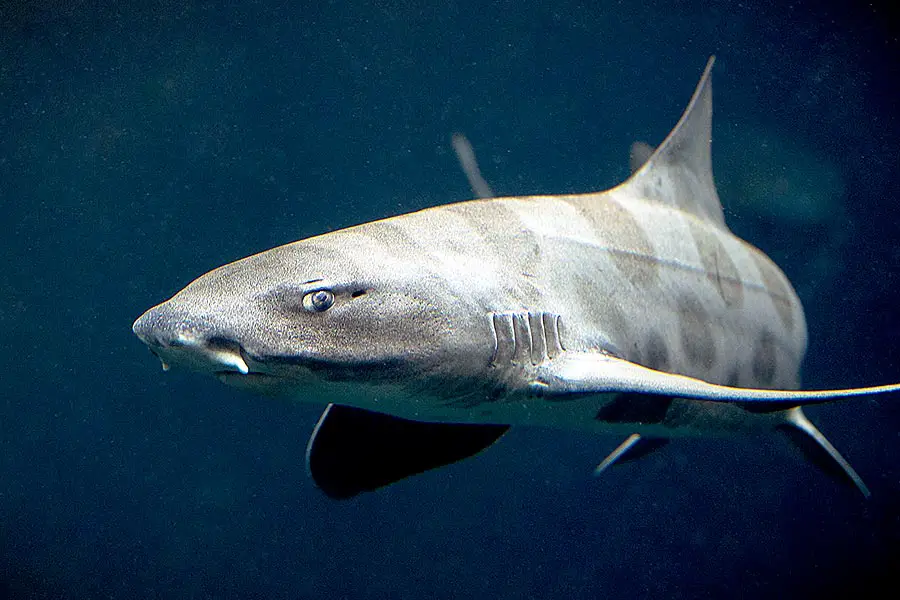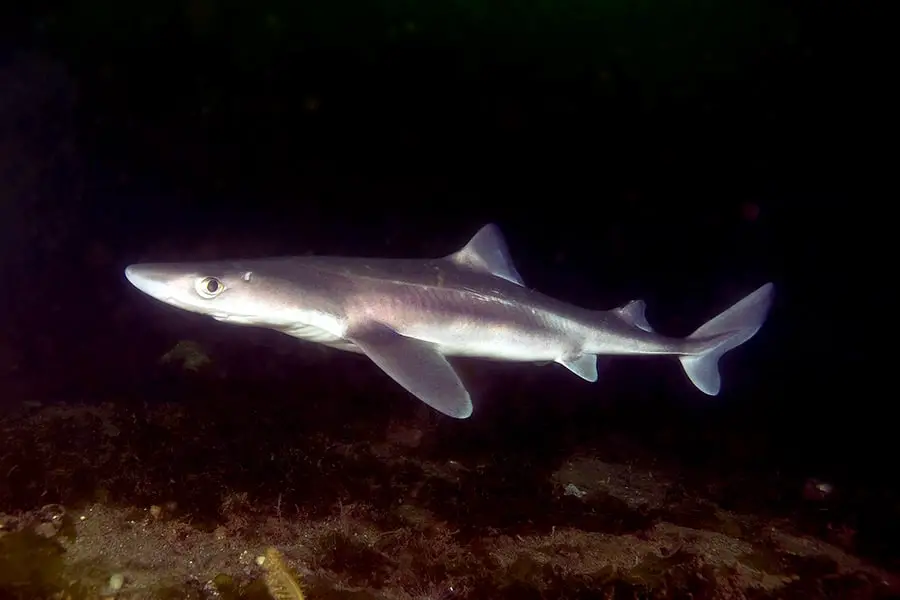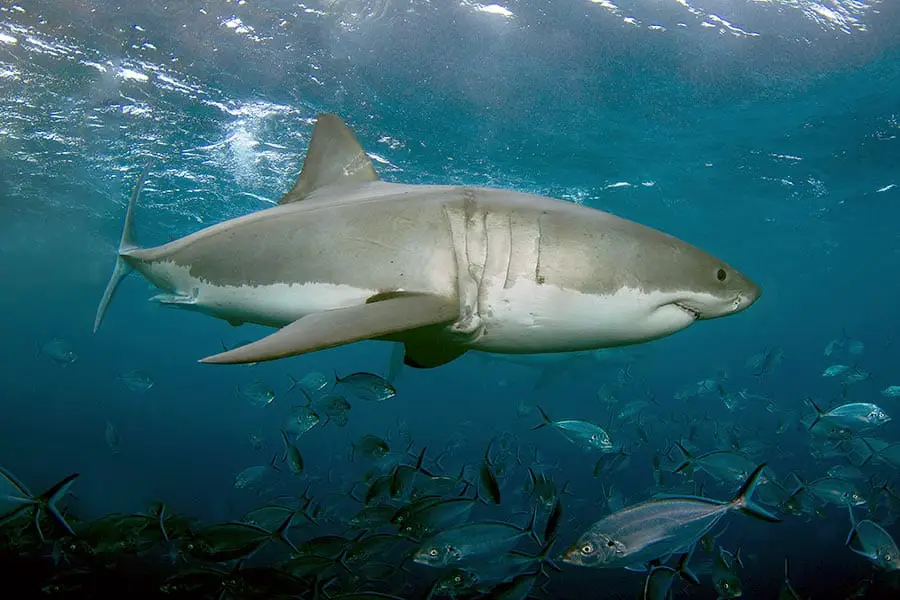
One of the San Francisco Bay myths is that its waters are teeming with dangerous, man-eating sharks, which makes swimming, surfing, kayaking, and paddleboarding risky propositions. Don’t fall overboard during that catamaran ride on the Bay; Jaws just might be waiting for his next meal! The truth, however, is far tamer than the legends would let on. Do sharks live in the Bay?
There are 11 species of sharks living in the San Francisco Bay, ranging from familiar (great white shark, blue shark) to obscure (swell shark, Pacific sleep shark). The good news is that great white sightings are rare, and the Bay’s other species of sharks are mostly docile non-maneaters.
Aside from sharks, the Bay is home to a vast array of underwater critters, including 500 species of fish. Crabs, skates, rays, and shellfish like clams, oysters, mussels, and shrimp are also abundant. Is it any wonder seafood is such a staple of the Bay Area restaurant scene? Let’s take a deep dive into the San Francisco Bay to get a better look at the sharks and marine wildlife that live there.
About the San Francisco Bay
Before we talk about what lives in the Bay, let’s first talk about the Bay itself. The Bay is known as one of the world’s finest natural harbors and one of California’s most important eco-features. Geographically, the Bay is 60 miles long and 13 miles at its widest point. While massive in size, the Bay is only as deep as a swimming pool. Seventy percent of the Bay depth is less than 12 feet deep, and in some parts, its depth is only 12 to 36 inches! Because of this, frequent dredging must be done to allow large ships to transit the Bay. The Bay is deepest around the Golden Gate Bridge, at 372 feet.
Other Posts of Interest
- Where Do Cruise Ships Dock in San Francisco?
- Is Pier 39 the Same as Fisherman’s Wharf?
- Is Ghirardelli Chocolate Made in San Francisco?
- Where Can I Watch The San Francisco Giants Play?
The Sharks of the Bay
To this day, there hasn’t been a conclusive survey of exactly how many sharks populate the Bay, so their numbers are unknown. The majority of the Bay’s sharks are bottom feeders, so unless they’re pulled from the depths by a fisherman, they’re rarely seen. As well, the Bay’s rough, murky waters often make it hard to spot sharks.
Of the species of sharks found in the Bay, at least five of those live in the Bay year-round. The others breed in the Bay but return to the open ocean after giving birth. As we’ve established, the sharks of the San Francisco Bay generally pose no danger to those who find themselves in the Bay. When you are out enjoying the Bay for recreational activities, here are some of the more common species you might encounter:

- The leopard shark is the most predominant shark found in San Francisco Bay. Sport and commercial fishermen seek this shark, as it is marketed as a food source. The leopard shark can grow up to six feet long and are known for their beautiful markings. The leopard shark mostly feeds on small fish and invertebrates.
- The brown smoothhound shark is the second most abundant shark found in the Bay. The smoothhound is brownish-gray and can grow up to three feet in length. This shark is a bottom dweller and feeds on ghost shrimp, small fish, crabs, and worms. The California sea lions find them to be a tasty treat and are their top predator.
- If you are wondering what the Bay’s biggest marine predator is, that would be the broadnose sevengill shark. You guessed it, this shark gets its name from the seven gills on the sides of its head. They usually grow to about 10 feet and can weigh up to around 230 pounds. They can be aggressive if provoked; therefore, they can be dangerous.
- The soupfin or tope shark has a bluish to a dusky gray color and grows to six feet long. There is an established market for it, so, therefore, it is harvested throughout its range. In Asia, the soupfin shark’s large fins are highly valued for their use in soups.
- The spiny dogfish shark is a slow swimmer and can be found almost worldwide. Named for the spine that protrudes from the front of its dorsal fin, it may live up to a hundred years and rarely grows longer than 40 inches.
As you can see, none of these sharks strike fear into people’s hearts. But what about the great white shark? Doesn’t the Bay have a reputation for being a hotbed of great white activity?

Great White Sharks
Well, not quite. While great white sharks are occasionally seen near the Golden Gate Bridge, they rarely stray into the Bay’s main waters. Great whites are most abundant near the Farallon Islands, 35 miles west of the Golden Gate Bridge. The islands are designated as a protected National Wildlife Refuge and as a National Marine Sanctuary, so they are closed to the public.

Rugged and teeming with wildlife, the Farallons are home to large numbers of sea lions and elephant seals, two of the great white’s favorite prey. Scientists estimate there are at least 80 shark attacks around the Farallons during the height of autumn shark season, which is often called “Sharktober.” However, like other Bay shark numbers, the overall seasonal great white shark population is unknown, with estimates from thirty to more than one hundred.
Bay Area Answers Fun Fact: The most recent great white sighting in the Bay was in July 2019 when a fisherman accidentally hooked an eight-footer near Alcatraz. The shark dragged the boat for an hour and two miles before the fisherman cut the line, which is required by law. Great white sharks have been protected in California’s waters since 1994, and it is illegal to catch, pursue, hunt, capture, or kill a great white shark.
Survival Challenges Facing Bay Sharks
As with any of the other marine life species that live in the Bay, sharks face grave environmental challenges due to toxins, heavy metals, plastic, and other forms of pollution that end up in the water of the Bay. The overfishing, dredging, and human use of the Bay also contribute to the sharks’ challenges and all the other aquatic life that resides there.
Of those, pollution poses the most significant risk to sharks and the people who eat them. Bottom feeders like leopard and smoothhound sharks accumulate within their bodies toxins, pesticides, mercury, and heavy metals they ingest from feeding on creatures that live in the often-contaminated sediment of the Bay floor. Because of this, California health authorities recommend that women under 45 and children under 17 should not eat any type of shark caught in the Bay. For others, one serving a week is considered safe. Those who do indulge say that leopard shark tastes like salmon.
Bay sharks also often face dangers from sea lions and other sharks like the predatory sevengill shark. Parasites are also a significant threat and were responsible for large kill-offs of Bay sharks in 2011, 2017, and 2019.

Where to Swim with Fishes (and Sharks):
While there are plenty of places in San Francisco where you can learn to scuba dive, actual diving spots in the immediate San Francisco area are scarce. The Bay Area’s best scuba diving experiences are found along the San Mateo coast, in the Santa Cruz area, and Monterey, a stunning area of natural beauty, two hours south of San Francisco. It’s home to the popular Monterey Bay Aquarium and miles of the most incredible coastline you may ever see.
Perhaps the best way to get up close and personal with the sea creatures native to the San Francisco Bay is by visiting Aquarium of the Bay at Pier 39 on Fisherman’s Wharf. There you’ll see many of the sharks mentioned earlier, as well as bat rays, schools of anchovies, sturgeon, the giant Pacific octopus, jellyfish, and the bizarre California sheephead. Visit the aquarium’s website for information on tickets and special events.
In Conclusion
The sharks of the Bay might not be a particularly scary lot, and they’re probably most likely more fearful of you than you are of them. In fact, with average water temperatures of 56°F, hypothermia poses more of a threat to Bay swimmers than attacks by sharks or any other marine creature. So, venture into the Bay, if you dare. Just don’t be afraid of the sharks.





